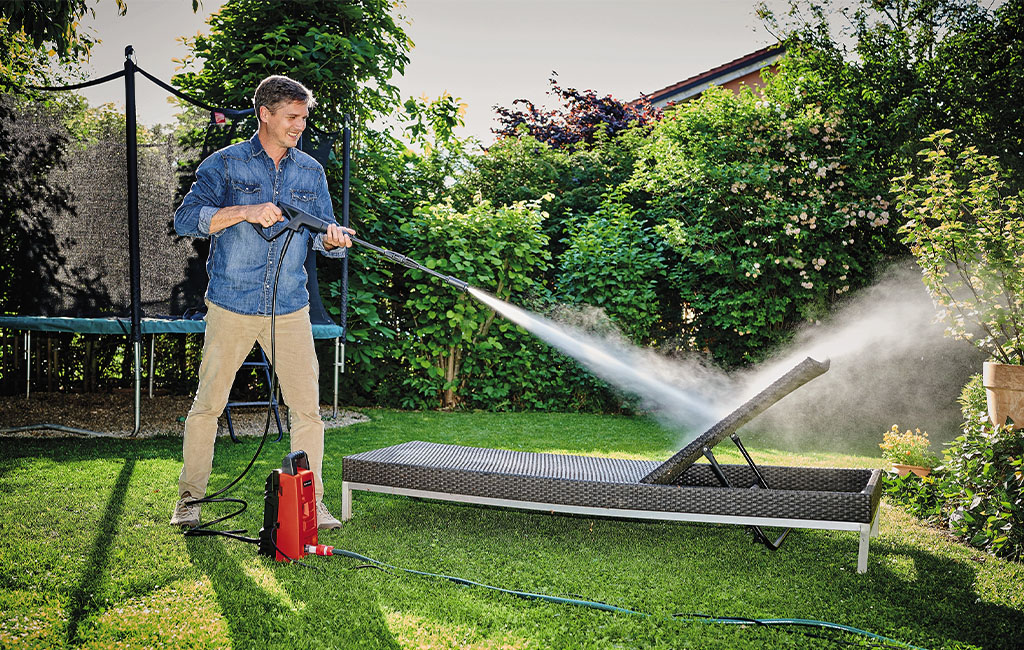
Outdoor furniture brings life to patios, decks, gardens, and poolside spaces—but exposure to the elements takes a toll. Dirt, mildew, bird droppings, pollen, and even algae can make once-inviting chairs and tables look dingy. This leads many homeowners to ask: How often should I power wash my outdoor furniture?
The answer depends on the material, your local environment, and how frequently the furniture is used. In this article, we’ll break down the best cleaning schedule by furniture type, share safe power washing tips, and explain when to clean more (or less) often. Let’s dive in! 💦
🌦️ What Impacts How Often You Should Power Wash?
Before setting a strict cleaning schedule, consider these factors:
✅ Climate – If you live in a humid or coastal region, mold and mildew grow quickly. Dusty, arid climates require cleaning for airborne dirt and sand.
✅ Furniture Use – Heavy use means faster buildup of oils, food residue, or sunscreen—especially near pools.
✅ Shade vs. Sun – Shaded areas stay damp longer, promoting mildew growth.
✅ Tree Coverage – Leaves, sap, bird droppings, and pollen all increase frequency needs.
In short: where you live and how your furniture is used will determine how often you should clean. Let’s look at general rules by material.
🪑 Recommended Power Washing Frequency by Furniture Type
| Material | Suggested Frequency |
|---|---|
| Plastic/Resin | Every 1–2 months |
| Metal (aluminum, steel, iron) | 2–3 times per year |
| Wood (teak, cedar, etc.) | 2 times per year minimum |
| Wicker (synthetic or natural) | Once per season |
| Cushions/Fabric Covers | Spot clean monthly, full wash seasonally |
🔁 Tip: Even if your furniture “looks” clean, invisible buildup can damage surfaces or invite mildew. A routine schedule keeps materials lasting longer.
Browse Amazon Here For Top Rated Power Washers And Accessories
⚠️ Signs It’s Time to Power Wash
Even if it hasn’t been long since the last cleaning, keep an eye out for:
- Green or black spots (mold/mildew)
- White powdery residue (pollen buildup)
- Stains from food, drink, or animals
- Slippery or greasy surfaces
- Musty or sour smells
If you notice any of the above, it’s time to break out the pressure washer. 🧼
🧼 Safe Power Washing Tips by Furniture Type
Not all furniture can handle the same pressure or technique. Here’s how to do it right:
🔹 Plastic/Resin Furniture
- Use a 25° or 40° nozzle
- 1,200–1,500 PSI is sufficient
- Avoid holding the wand too close to prevent warping
🔹 Metal Furniture
- Rust-prone areas should be washed carefully
- Rinse thoroughly to avoid soap residue that attracts rust
- Follow up with a water-repellent coating or wax
🔹 Wooden Furniture
- Use low pressure (500–800 PSI)
- Avoid harsh detergents—opt for wood-safe cleaners
- Power wash with the grain
- Reseal after cleaning if the finish is stripped
🔹 Wicker Furniture
- Use a gentle nozzle with low PSI (max 1,200)
- Keep distance to avoid breaking fibers
- Best to use a soft brush + rinse for natural wicker
🔹 Cushions and Fabric
- Remove covers and wash separately when possible
- Never use high pressure directly on fabric—it can tear
- Use soft wash technique with low pressure + detergent
⚠️ Never pressure wash furniture with visible cracks, dry rot, or chipping paint—this can make damage worse.
📆 Monthly Outdoor Furniture Maintenance Plan
Here’s a simple routine to extend the life of your furniture between full power washes:
- Wipe down surfaces weekly with a damp microfiber cloth
- Spray with a hose monthly to prevent dirt buildup
- Spot treat mildew with vinegar or mild cleaner
- Cover or store during heavy rain or snowfall
- Deep clean with power washing every few months depending on material
⏱️ The time you spend maintaining your furniture saves you money long term by preventing the need for replacements.
🧽 Eco-Friendly Alternatives Between Washes
Want to reduce the frequency of full-on power washing? Try these:
- Fabric sprays with UV and mildew protection
- Furniture covers for off-seasons or wet weeks
- Dry brushing debris off wicker and wood
- DIY natural cleaners (water + vinegar + lemon juice)
♻️ Power washing is effective, but it uses more water than manual cleaning. Keeping up with light cleaning in between means fewer deep cleans.
💡 Bonus Tip: Set Reminders by Season
Align your cleaning with the seasons:
- Spring – Clean away winter debris, bird droppings, and algae
- Summer – Mid-season refresh if the furniture is heavily used
- Fall – Remove pollen and leaves, then prep for winter storage
- Winter – If your area gets snow, store or cover everything
This seasonal rhythm prevents grime from building up and damaging materials long-term.
🏁 Final Thoughts
So, how often should you power wash outdoor furniture?
👉 As a rule of thumb:
- Plastic and resin – Every 1–2 months
- Wood and metal – Twice a year
- Wicker and cushions – Once a season, plus spot cleaning
Keeping your patio furniture clean not only improves curb appeal but also extends the life of your investment. With the right schedule, gentle pressure, and attention to materials, your outdoor space will stay inviting all year long. 🪑✨🧽
Browse Amazon Here For Top Rated Power Washers And Accessories






